
For moving your shipment from origin to destination, there are usually several different modes of transportation available. The most suitable transport mode depends on possible transport routings available between the point of origin and the point of destination. For example, if you need to move your goods from New York to Amsterdam, there are no road freight and rail freight options possible.
Contents
Create Your No-Cost Account Today and experience the New Era of Logistics
When selecting the most efficient cargo transport mode, you need to consider how quickly your shipment should arrive at the destination (transit time) and what is your budget for shipping (transportation cost). In most cases faster means higher cost, but not always.
Besides transport time and cost, the cargo value and the measurements of the shipment should be also considered when selecting the most efficient freight mode. In this article, we will help you to understand better the difference between the transport modes to make wiser decisions for your supply chain.
We all need a little advice sometimes, especially in an industry as complex as logistics, give us a call and benefit from MyDello’s years of experience.
Recent statistics show that 70% of global freight is shipped by ocean transport, 18% by road freight, 9% by rail, 2% by inland waterways and less than 0.25% by air. [source: https://en.wikipedia.org/wiki/Freight_transport]

Inside the EU the split of used transport modes is as follows:
[source: https://op.europa.eu/en/publication-detail/-/publication/52f721ed-c6b8-11e8-9424-01aa75ed71a1]
Create Your No-Cost Account Today and experience the New Era of Logistics
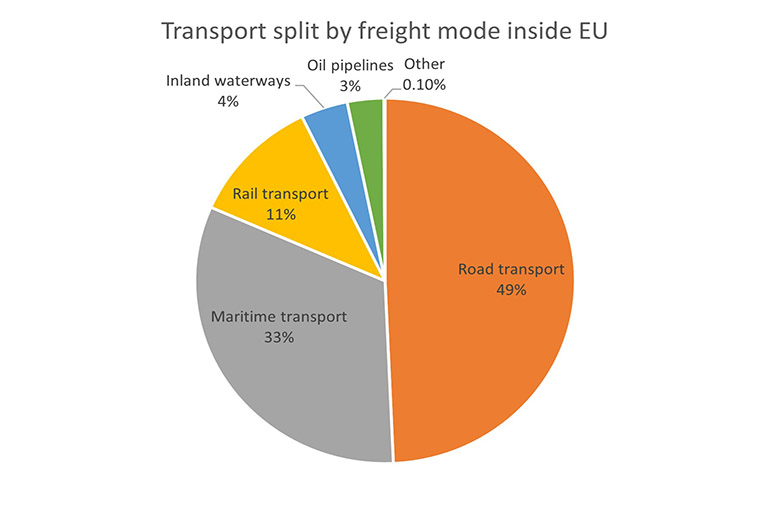
There are 4 main transport type categories in global shipping:
In addition, there is multimodal transport, which means combining several different shipping modes.
In general, we can say, that air freight is the fastest and most expensive type of cargo shipping. For bigger cargo quantities, and where it is possible, ocean freight has the lowest shipping cost level, but it also takes the longest time. Road freight and rail freight are somewhere in between. Trucking is the most flexible way of transport, but for bigger and long-distance transport there are several benefits for rail freight.
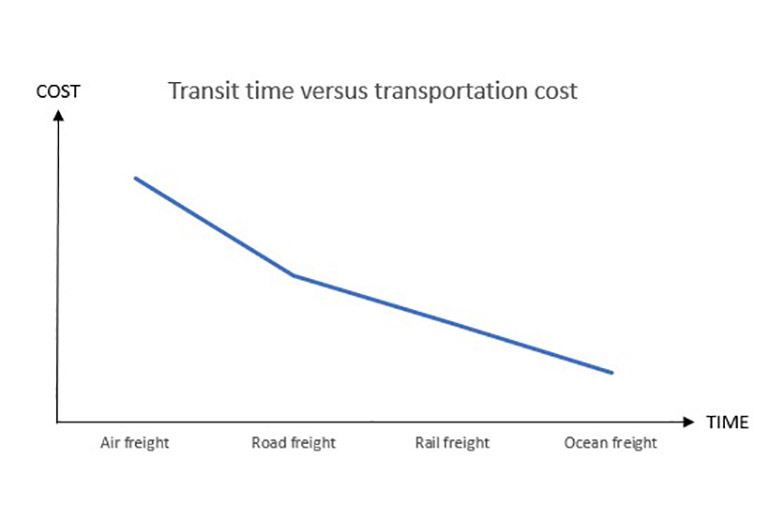
Sure, things are not so black and white. In the next paragraphs, we will give a more detailed overview of the transport modes.
Ocean freight is the main mode of transport for the global trade. It’s also called the lifeblood of global trade. Ocean transport is the best shipping mode for large cargo quantities, for some large cargo, it is actually the only option (if it does not fit into an airplane).
The biggest ocean container ships have the capacity to load more than 20 000 containers.
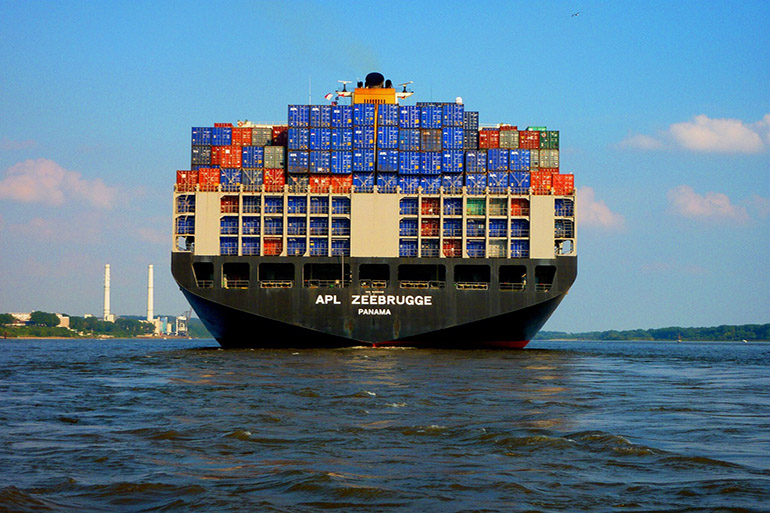
Ocean transport has the lowest cost per unit compared to other freight types, but it has also the longest transit time in most cases. For overseas transport, if the cargo size and weight are too big for air freight, ocean transport is the only option.
Most of the low-cost bulk cargo, such as cereals, iron, coal etc., is moved by ocean freight. It is also the preferred mode of transport for high-volume and heavy cargo, such as minerals, metals etc., which are just not economically reasonable to move by air.
Ocean freight has the lowest environmental impact for shipped kg compared to other freight modes; therefore, many customers are preferring this.
Most of the ocean cargo is shipped in containers. The main types of ocean shipping containers are:
Shipping containers with strict measurements makes it possible to load these on huge ocean vessels as LEGO blocks. Most commonly are used 20’ (external dimensions 6090mm x 2440mm x 2590mm) and 40’ containers (12180mm x 2440mm x 2590mm). There are also longer 45’ containers in use and some higher (High-Cube Container) and wider (Pallet Wide Container) options.
You can find more detailed info about the different container types and container dimensions on our Resources page
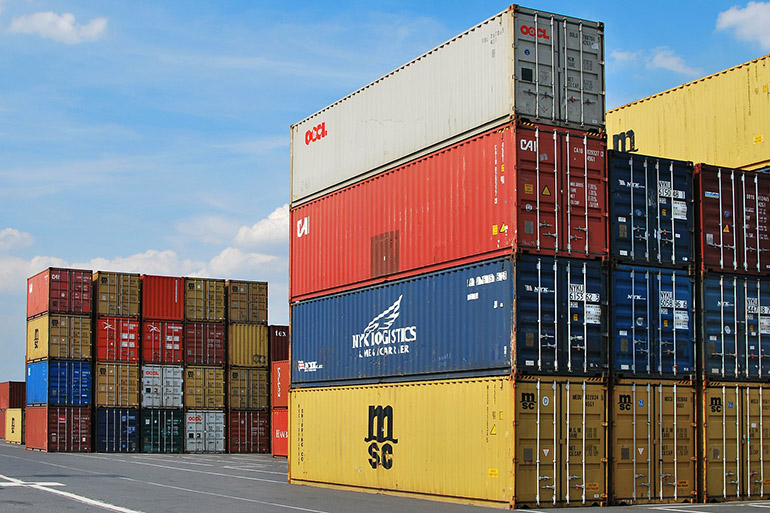
The Twenty-foot Equivalent Unit (TEU) is an exact unit of measurement used to determine cargo capacity in the shipping industry (for container ships and terminals). It is based on the dimensions of a 20’ Standard Container. This means that a 20’ container is equal to 1 TEU and a 40’ container is equal to 2 TEU.
The ocean carrier with a 10,000 to 20,000 TEU capacity is defined as a Very Large Container Ship (VLCS), while the carrier with a capacity of more than 20,000 TEU is defined as an Ultra Large Container Ship (ULCS ).
At the beginning of 2022, the largest container ship in the World is Ever Ace, which can carry 24 000 TEU.
Create Your No-Cost Account Today and experience the New Era of Logistics
Full Container Load (FCL) is an ocean freight shipment in which the cargo occupies a full container. So, FCL shipment is reasonable, if the cargo volume is big and takes most of the container capacity. If a customer is ordering the FCL shipment, in most cases, the empty container is delivered to the place of loading, where the shipper loads it with cargo.
Less than Container Load (LCL) is an ocean freight shipment wherein the shipper does not contract for a full container since the quantity of shipment is not enough for a full container and the container is filled by multiple cargos from different shippers.
There is a break-even point at which the price of a large LCL shipment equals the price of a 20’ FCL container. This varies depending on what route you’re transporting from and the current situation of the ocean transport market. Using the MyDello platform you can easily sort and compare available LCL, FCL and other transport options by total transport cost or by transit time.
Air freight is the best transport mode for goods that require fast delivery and minimal inventory level. Half of the international air cargo is carried in the bellies of passenger aircraft and the other half with cargo freighters.
In air freight, depending on the operating aircraft, there are size and weight limitations for the shipments.
The World’s largest cargo plane is Antonov An-225 (called also as “Mriya”). It can uplift more than 180 tons of cargo. See more here
One of the disadvantages of air transport is its high CO2 emission for transported kg. It’s the highest compared to other transport modes.
Sometimes on the way to the final destination airport, the shipments are moved between the middle airports by land (called road-feeder service) but are still considered as air cargo service.
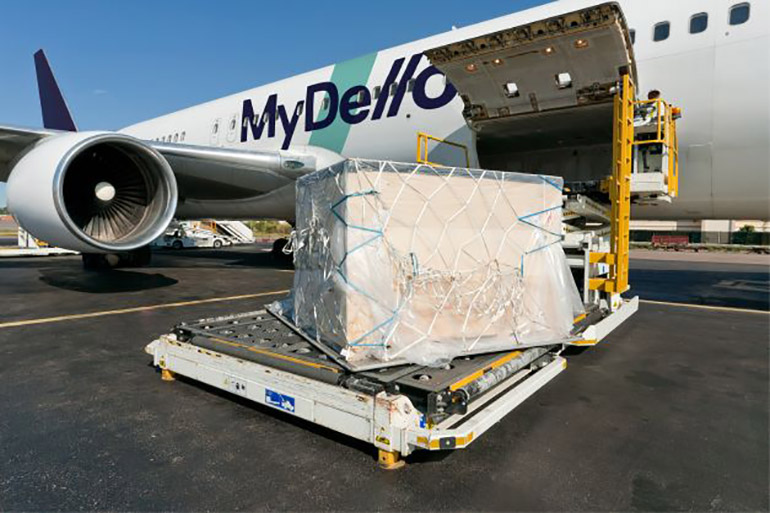
Air transport is the fastest, but also the most expensive mode of shipping. Although air cargo makes up only a small portion of total international freight, it is an essential transport mode for many industries, such as high-tech, automotive, medical etc., where time-critical deliveries are needed.
Air transport has the fastest handling processes and documentation is quite well-structured, therefore takes less time.
Air cargo needs less handling and there is no need for heavy packaging.
With air transport, you can ship your cargo basically anywhere, to most countries and territories in the World.
Create Your No-Cost Account Today and experience the New Era of Logistics
Road freight is the most common mode of transport for intra-continent deliveries. For example, inside Europe road freight makes about half of the total cargo deliveries.
Sure, we also need to consider that for international air, rail and ocean deliveries, the pick-up from the place of loading to international air- or seaport is done by road transport. The same applies to the final delivery to the consignee location.
Regular trailer in Europe is 13.6 meters long and holds up to 33 EUR pallets.
However, road freight is a quite flexible mode of transport, its efficient operation is affected by weather, road conditions and traffic.
The road transport industry has been struggling in recent years due to a lack of truck drivers. Truckman is not a popular profession among the younger generation anymore.
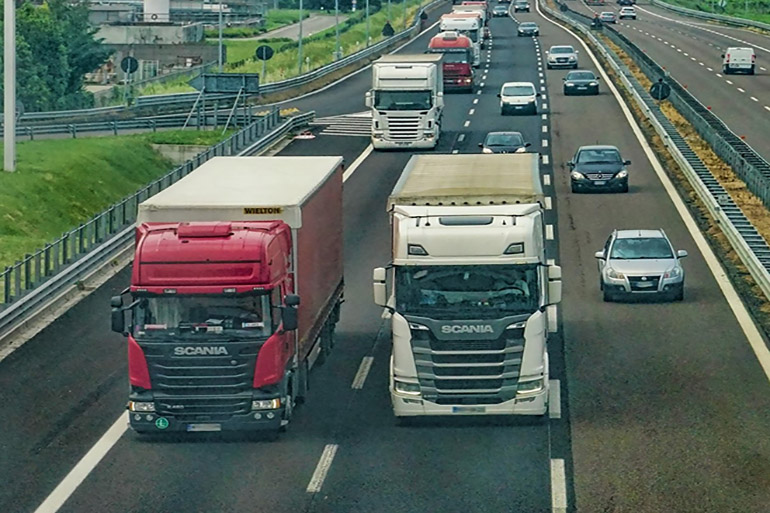
For short-distance deliveries, road transport is the most cost-efficient mean of transport. Road freight is relatively quick and has mostly regular time schedules in place. As it is well-regulated the expected transit times are quite predictable in road transport.
Road freight is flexible and available also in rural areas.
Similar to ocean freight shipments, trucking uses the full-load and part-load concepts.
Full Truck Load (FTL) is a road freight shipment in which the cargo occupies a full truck.
Less than Truck Load (LTL) is a road transport shipment wherein the shipper does not contract for a full truck since the quantity of shipment is not enough for a full trailer and the trailer is filled by multiple cargos from different shippers. LTL shipments can pass several terminals and different trucks on their way to the point of destination.
Using the MyDello platform you can easily sort and compare available LTL, FTL and other transport options by total transport cost or by transit time.
Historically rail freight has played an important role in international cargo deliveries. Tough, in recent decades its part in total global freight has reduced, still from 2015 rail freight container deliveries from China to Europe have shown a rapid increase.
When considered in terms of ton-kilometres hauled per unit of energy consumed, rail transport can be more efficient than other means of transportation. [source: https://en.wikipedia.org/wiki/Rail_freight_transport]
Compared to road freight rail freight becomes more cost-efficient, especially for long-distance deliveries.
One block train can have more than 100 wagons and only needs one driver.
The longest cargo train in the world is operating in South Africa on the 861km Sishen – Saldanha heavy-haul line. At maximum payload, it has had 375 wagons with a total length of 4.1 km

For long-distance transportation, rail freight is the most environment-friendly mode of transport. Rail transport is also relatively fast. For example, rail shipment from China to the EU takes about two times less time compared to ocean freight shipment.
In most cases, the rail freight is not affected by weather or traffic situation. Traditionally, rail has a strong safety record.
Create Your No-Cost Account Today and experience the New Era of Logistics
Multimodal transportation combines at least two different modes of transportation such as rail, ship, airplane and truck. For some routes, multimodal transport gives faster transit time or lower transportation costs.
Sometimes multimodal transport is the only way to move cargo to areas difficult to reach.
A good example is moving cargo out from China by rail freight up to Poland or Germany and then onforwarding from there by road freight to the final destination in Europe. This solution is about two times faster than ocean freight but has a significantly lower cost compared to air freight.
All the biggest integrators such as DHL, UPS, Kuehne+Nagel and DB Schenker are offering rail/truck solutions along the Silk Road network from China to Europe.
With sea/air transport solution shipments move out from APAC ports by ocean freight up to Dubai and from Dubai uplifted with air freight to Europe. This solution gives about 40% faster transit time compared to pure ocean freight but has a lower total transport cost compared to pure air freight. It is also more eco-friendly.
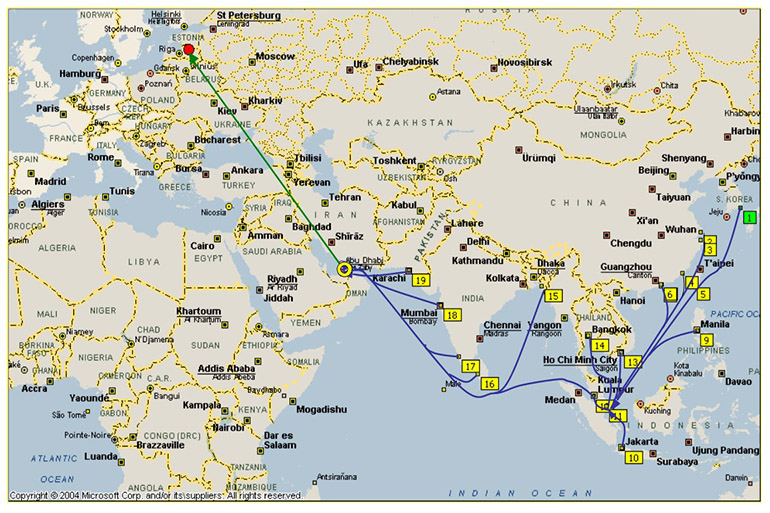
There are several options for moving your shipment from origin to destination. Each transport mode has its advantages and disadvantages and there are several factors to consider before making the final choice. Still, in general, the decision comes down to (1) what transport options are available, (2) how urgently you need the cargo at the destination and (3) what is your budget for shipping.
MyDello takes the stress out of global shipping. Understanding your shipment size can be difficult at the best of times, MyDello has built an online calculator to simplify this whole process.
Considering your shipment’s weight and dimensions, modern logistics platforms help you to make wiser decisions between different modes of transport on transit time and price scale.
Create Your No-Cost Account Today and experience the New Era of Logistics

